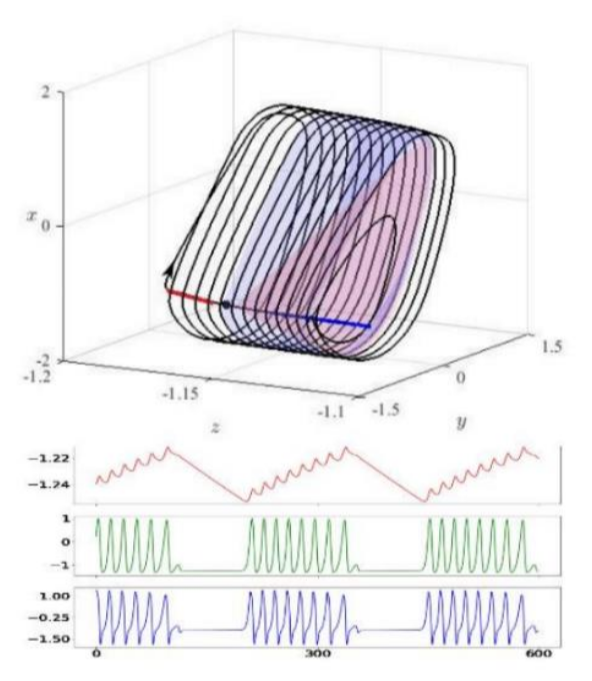In this research domain, we delve into the intricate realm of nonlinear dynamical systems, exploring them through a variety
of lenses. Our approach is multifaceted, encompassing rigorous mathematical analysis, bespoke software development tailored for general Differential Equation systems, and practical applications spanning neuroscience, computational biomechanics, and photonics. Our modeling strategies are diverse, drawing from a rich toolkit that includes ordinary and partial differential equations, time-delayed systems (TDSs), and piecewise (non-smooth) dynamical systems.
We leverage our expertise across multiple disciplines, ranging from multiscale physics to singular slow-fast system reductions, and employ techniques such as multiple timescales analysis and hybrid models. These models, such as delayed PDEs for photonics or non-smooth TDSs for interacting neurons, serve as powerful frameworks for understanding complex phenomena.
On the mathematical front, we harness the qualitative theory of ordinary differential equations to unravel the intricate nonlinear dynamics exhibited by both real-world and synthetic systems. Whether studying individual elements or interconnected networks, we employ mathematical tools such as topological descriptions of solutions in phase space, identification of attractors, and analysis of stable and unstable manifolds to gain insights into system behavior. Statistical tools for data treatment are also needed. The presence of long-range interactions and multi-scale phenomena presents formidable challenges for high-performance computing. To address these challenges, we focus on developing computational frameworks capable of handling highly scalable codes. Furthermore, we explore the integration of machine learning techniques to minimize the computational burden associated with long-range interactions, thereby paving the way for novel computational approaches. The study of time-delayed systems and their parallels with spatially extended systems offers a fertile ground for fundamental scientific discoveries. Additionally, we leverage our analytical tools to investigate circuit -level mechanisms underlying adaptive decision-making within cortico-basal ganglia-thalamic networks, shedding light on fundamental aspects of neural computation. Through our interdisciplinary approach and cutting-edge methodologies, we aim to advance our understanding of nonlinear dynamical systems and their multiple applications across diverse scientific domains.






